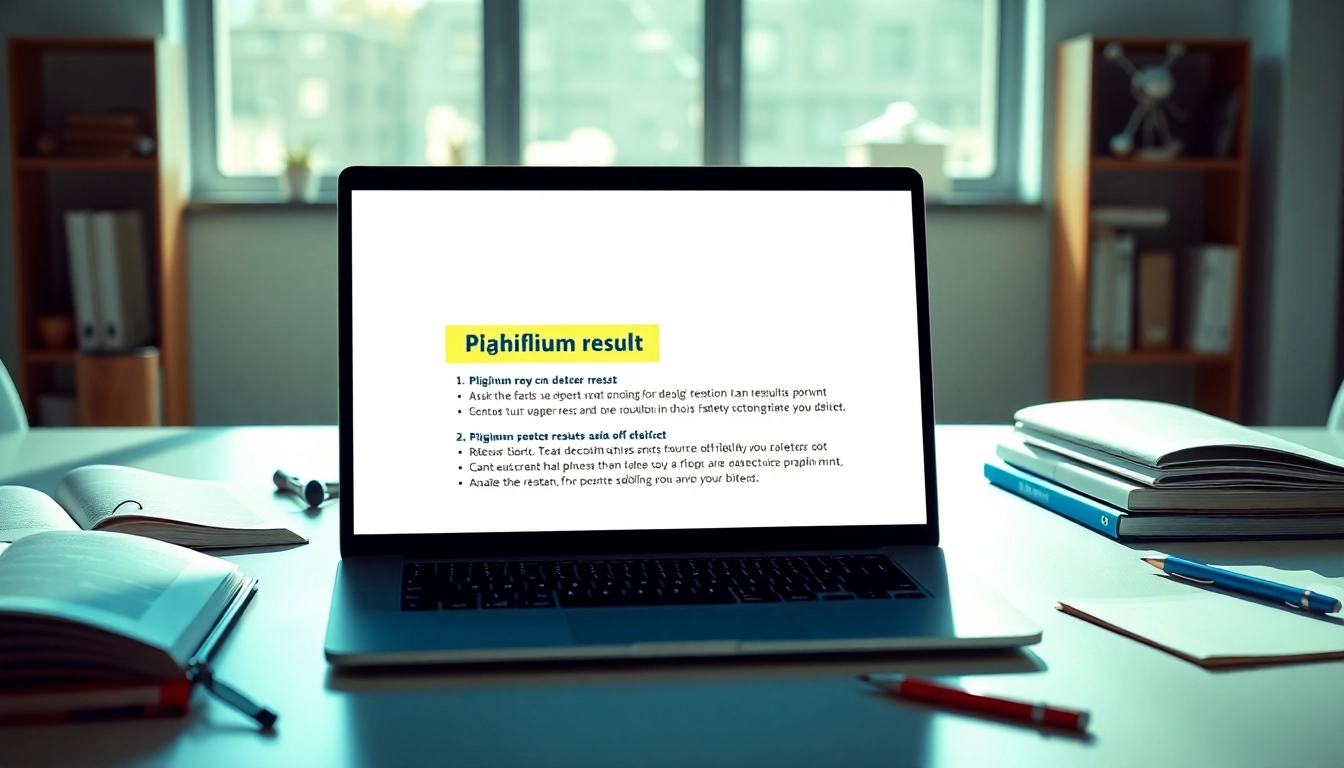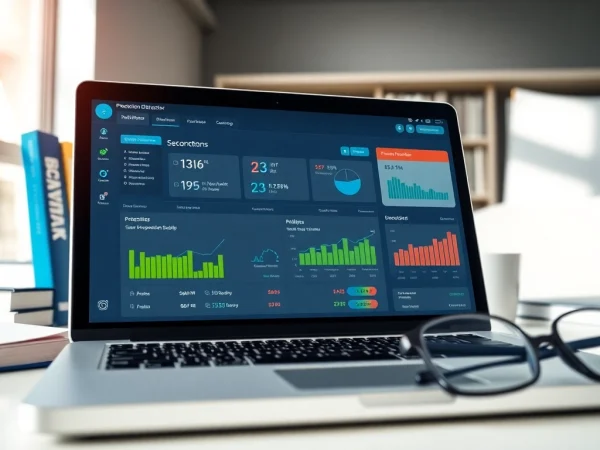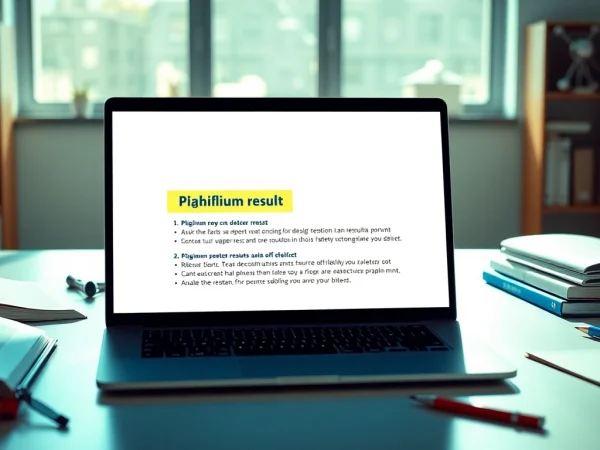How a Plagiarism Detector Enhances Academic Integrity and Writing Skills
Understanding Plagiarism Detectors
In an era where information is readily available and accessible, ensuring the originality of written content has become increasingly important. This is where a plagiarism detector comes into play, acting as a safeguard against unintentional copyright infringement and ensuring academic integrity.
What is a Plagiarism Detector?
A plagiarism detector is a specialized tool designed to identify instances of plagiarized content within a written work. These tools compare submitted text against vast databases consisting of academic papers, articles, websites, and other digital media to pinpoint similarities and potential copying. Plagiarism detectors serve both students and professionals by promoting originality and helping users improve their writing skills.
How Plagiarism Detectors Work
Plagiarism detection technology leverages advanced algorithms and database functionality to analyze text structures and patterns. Typically, the process involves the following steps:
- Text Submission: The user submits a piece of writing for analysis, either by pasting it directly into the tool’s interface or uploading a document.
- Database Scanning: The tool scans its comprehensive database, which includes published works, articles, and academic papers.
- Similarity Detection: Algorithms compare the submitted content against similar phrases, sentences, or entire blocks of text found in the database.
- Report Generation: After the scan, a report is generated that highlights matched content, providing a similarity percentage and sources where the matches were found.
This systematic analysis highlights not only overt plagiarism but also instances of similarity that, while not outright copying, may demand appropriate citations or rewriting.
Common Uses in Education and Professional Writing
Plagiarism detectors are invaluable tools used across various disciplines and contexts. Some common uses include:
- Academic Integrity: Students and educational institutions utilize these tools to uphold academic standards by ensuring that work submitted is original.
- Content Creation: Writers, bloggers, and marketers use detectors to confirm the uniqueness of their content before publication, mitigating the risks of copyright issues.
- Employment Assessments: Companies may deploy these tools to evaluate written reports or applications to ensure originality and integrity.
Key Features of Effective Plagiarism Detectors
Accuracy and Reliability
The foremost criterion for a plagiarism detector is its accuracy. An effective tool should employ a multifaceted approach, utilizing extensive databases and sophisticated algorithms that minimize false positives and negatives. A reliable tool can adapt to new content and continuously update its database to remain current with the latest publications.
User-Friendly Interface
A user-friendly interface is crucial, especially for those who may not be tech-savvy. Ideal plagiarism detection tools present a straightforward submission process, clear reporting formats, and easy navigation. A helpful tool will also feature instructional guides to assist users in understanding its functionality.
Integration with Writing Tools
As professionals and students often use various writing platforms, an effective plagiarism detector will integrate seamlessly with word processors and content management systems. Integration allows for instant checks within the writing environment, thereby streamlining the editing process and facilitating more immediate corrections of potentially plagiarized segments.
Benefits of Using a Plagiarism Detector
Maintaining Academic Integrity
For academia, plagiarism detectors are essential in maintaining standards of integrity. By encouraging students to produce original content, these tools also contribute to a culture of responsibility and respect for intellectual property. Institutions can foster a learning environment that values originality and innovation.
Improving Writing Skills
Using a plagiarism detector can illuminate patterns of writing that may violate academic standards. By identifying sections that require citation or paraphrasing, writers can refine their skills. Furthermore, regular use of these tools can bolster understanding of proper citation practices and enhance overall writing quality.
Saving Time and Effort
Manually checking for plagiarism can be tedious and often unreliable. A plagiarism detector can swiftly analyze lengthy documents, delivering quick results that save both time and effort. This efficiency enables writers to focus more on content quality rather than ensuring its originality.
Top Plagiarism Detectors on the Market
Comparing Features of Leading Tools
Several plagiarism detection tools are available, each with unique features. Here’s a comparison of some of the leading tools:
| Tool | Key Features | Pricing |
|---|---|---|
| Turnitin | Comprehensive database, advanced detection algorithms, educational focus | Subscription-based |
| Grammarly | Plagiarism checker integrated with writing assistant, grammar checking | Free and Premium options |
| Duplichecker | Free to use, simple interface, quick results | Free with premium upgrade options |
| PapersOwl | AI-driven detection, multiple file formats supported | Free trial, then subscription-based |
| Copyleaks | Detects AI-generated content, plagiarism reports | Varied pricing tiers |
User Reviews and Ratings
When evaluating different plagiarism detectors, user feedback plays a crucial role. Surveys and reviews often reveal insights into each tool’s effectiveness, ease of use, and customer service quality. For instance, Turnitin is frequently praised in educational circles for its thoroughness, while Grammarly is noted for its ease of use and additional writing support features. Users typically highlight the importance of these tools in their academic and professional writing processes.
Free vs. Paid Options
While several free plagiarism detectors provide basic functionality, paid options tend to offer advanced features, such as deeper scans, integrations, and customer service. It’s important for users to weigh the pros and cons based on their specific needs—considering factors like frequency of use, document length, and the importance of accuracy in the resulting reports.
Best Practices for Using a Plagiarism Detector
How to Interpret Results Effectively
Once the results are generated, it’s essential to interpret them accurately. High similarity percentages may require further investigation; however, not all similarities indicate plagiarism. The context is crucial, and users should evaluate where the matches occur and whether proper citations or adjustments are necessary. Familiarity with common strategies to rephrase content can further enhance understanding.
Tips for Properly Citing Sources
To prevent plagiarism, mastering citation is critical. Users should familiarize themselves with various citation styles (APA, MLA, Chicago, etc.). Moreover, keeping track of sources during research is advisable to facilitate accurate citations in the final drafts. Utilizing citation management tools can also streamline this process.
Continuous Learning and Improvement
Regularly using a plagiarism detector can foster continuous learning. Writers should take the opportunity to analyze their reports, identifying common mistakes or recurring question marks regarding originality. Such insights can offer significant opportunities for skill improvement and greater attention to detail in writing.










